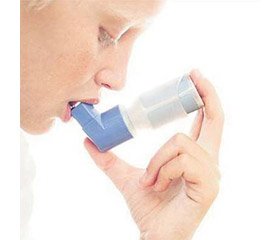Журнал «Здоровье ребенка» 7 (58) 2014
Вернуться к номеру
Clinacal and smmunological features allergenspecific smmunotherapy asthma in children
Авторы: Nedelska S.M., Taran N.M. - Zaporozhye State Medical University Department of Pediatrics Faculty Ukraine
Рубрики: Педиатрия/Неонатология
Разделы: Справочник специалиста
Версия для печати
allergenspecific immunotherapy, asthma, children, allergens.
In recent years significantly increased the number of children and adolescents who suffer from asthma. According to official statistics, the number is more than a quarter million people in Ukraine. Asthma - polyetiological disease, the development of which play a role as internal risk factors that contribute to human susceptibility to it, and external factors that cause the development of this disease in predisposed people to it, leading to acute illness or for long-term preservation of symptoms. Achieved in the present progress in the study of mechanisms of asthma has become the basis for developing new concepts of pathogenetic treatment whereby basis of asthma as a disease is allergic airway inflammation and associated hyperreactivity of the bronchi.
To date, the baseline in the treatment of asthma is considered the appointment of anti-inflammatory drugs; to allergenspecific immunotherapy (ASIT) ratio is ambiguous, and sometimes - skeptical. This highlights the unresolved questions asthma therapy in children, such as searching for all methods of action pathogenesis of allergic process, the changing nature of the child's body to respond to natural allergen exposure. Thus, one of the outstanding issues of asthma treatment is to search for new criteria of active inflammation, the study of the diagnostic information content, monitoring immunological and biochemical parameters in the application allergenspecific immunotherapy in children with asthma. The purpose of the study was to increase the effectiveness of treatment of asthma in children by ASIT, depending on its duration and clinical and immunological changes. We have set the following objectives: - to examine the clinical and immunological course of asthma according to the phenotype and duration of specific immunotherapy.
Object of study: broncho-pulmonary pathology in children in different phases of the disease (acute , remission). At the time of the study, initial therapy meet the severity of asthma. Methods: clinical, biochemical (determination of total and allergen-specific IgE and eosinophilic cationic protein serum), provocative skin tests by prick testing with major pollen, household and food allergens, instrumental methods. During ASIT we observed regression of both clinical manifestations of asthma, but comorbidity. Thus, after treatment of tick-borne allergens allergic rhinitis and / or conjunctivitis were kept in 30.96 % of patients. ASIT epidermal allergens has reduced these manifestations to 15.38 %, and therapy pollen allergens - 35.29 % regression of symptoms under the influence of therapy clearly confirmed scoring. Clinical manifestations to treatment were assessed at 6,64 ± 0,06 points after completion of ASIT tick allergens. Epidermal and pollen allergens, it was significantly decreased to 0,41 ± 0,05, 0,15 ± 0,06, 0,53 ± 0,24 points respectively. Similar was ball dynamics symptoms of contact factor - significant allergen. Scoring Evaluate symptoms decreased from 3,21 ± 0,99 before the therapy to complete (at ASIT epidermal alerehnamy) the elimination of clinical symptoms. B value of FEV1 expressed as % age norm values, significantly increased only when vaccination pollen allergens, and the absolute value of PEF - epidermal and pollen allergens. During the quality and effectiveness of scoring ASIT different allergens in relation to improvement of respiratory function most significant changes were observed in children with sensitization to pollen allergens plants.The specified pattern can be explained by the fact that the level of epidermal allergens in the environment is high enough for the whole year and not pereterpivaye seasonal fluctuations characteristic of the tick-borne pollen and allergens. Epidermal allergens are also endowed with a high degree of immunogenicity and can lead to a more pronounced changes in the immune system. . Conclusions: - allergenspecific immunotherapy tick, epidermal and pollen allergens clinically and immunologically treatment is highly effective asthma in children; - ASIT tick-borne allergens endowed with greater clinical efficacy than pollen and epidermal; - on immunological parameters, ASIT epidermal allergens is more effective than Asit tick and pollen that may be associated with the prevalence of epidermal allergens feature animals in the environment; - use allergenspecific immunotherapy in the treatment of asthma allows imunoreabilituvaty children with different types sensytyzation.
1. Aheeva E.S. Mekhanyzmы prohrammyruemoy hybely lymfotsytov, эozynofylov y neytrofylov u bol'nыkh bronkhyal'noy astmoy / Dyssertatsyya na soyskanye nauchnoy stepeny kandydata med. nauk // h.Tomsk. - 2006h. – s.1-5
2. Hlobal'naya stratehyya lechenyya y profylaktyky bronkhyal'noy astmы, peresmotr 2009, 2010 hh.
3. Drannyk H.N. Klynycheskaya ymmunolohyya y allerholohyya. – Odessa: Astroprynt, 1999. – 603s.
6. Emel'yanov A.V. Spetsyfycheskaya ymmunoterapyya. // Obshchaya allerholohyya. T.1 pod red. H.B. Fedoseeva. S.-Pb., Normed-Yzdat, 2001: 682-93.
7. Lasytsya O.I., Nedel's'ka S.M. Spetsyfichna vaktsynatsiya alerhenamy u ditey / Metodychni rekomendatsiyi dlya likariv-interniv, likariv zahal'noyi praktyky ta likariv-alerholohiv, 2002. – 44 s.
8. Bousquet J., Lockey R., Mailing H.J. Aller-gen immunotherapy: therapeutic vaccines for allergic diseases. A WHO position paper // J. Allergy ClinImmunol 1998; l(Pt l): 558-562.
9. Calderon M.A., Cox L., Casale T.B., Moin-geon P., Demoly P. Multiple-allergen and single-allergen immunotherapy strategies in polysensitized patients: looking at the pub-lished evidence // J. Allergy. Clin. Immunol. 2012;129:929-934.
11. Szefler S.J., Phillips B.R., Martinez F.D., Chin-chilli V.M., Lemanske R.F., Strunk R.C. et al. Characterization of within-subject responses to fluticasone and montelukast in childhood asthma // J. Allergy Clin. Immunol. 2005; 115:233-242.
12. Pajno G.B., Barberio G., De Luca F., Morab-ito L., Parmiani S. Prevention of new sensi-tizations in asthmatic children monosensitized to house dust mite by spe-cific immunotherapy. A six-year follow-up study // Clin. Exp. Allergy. 2001; 31: 1392-1397.

